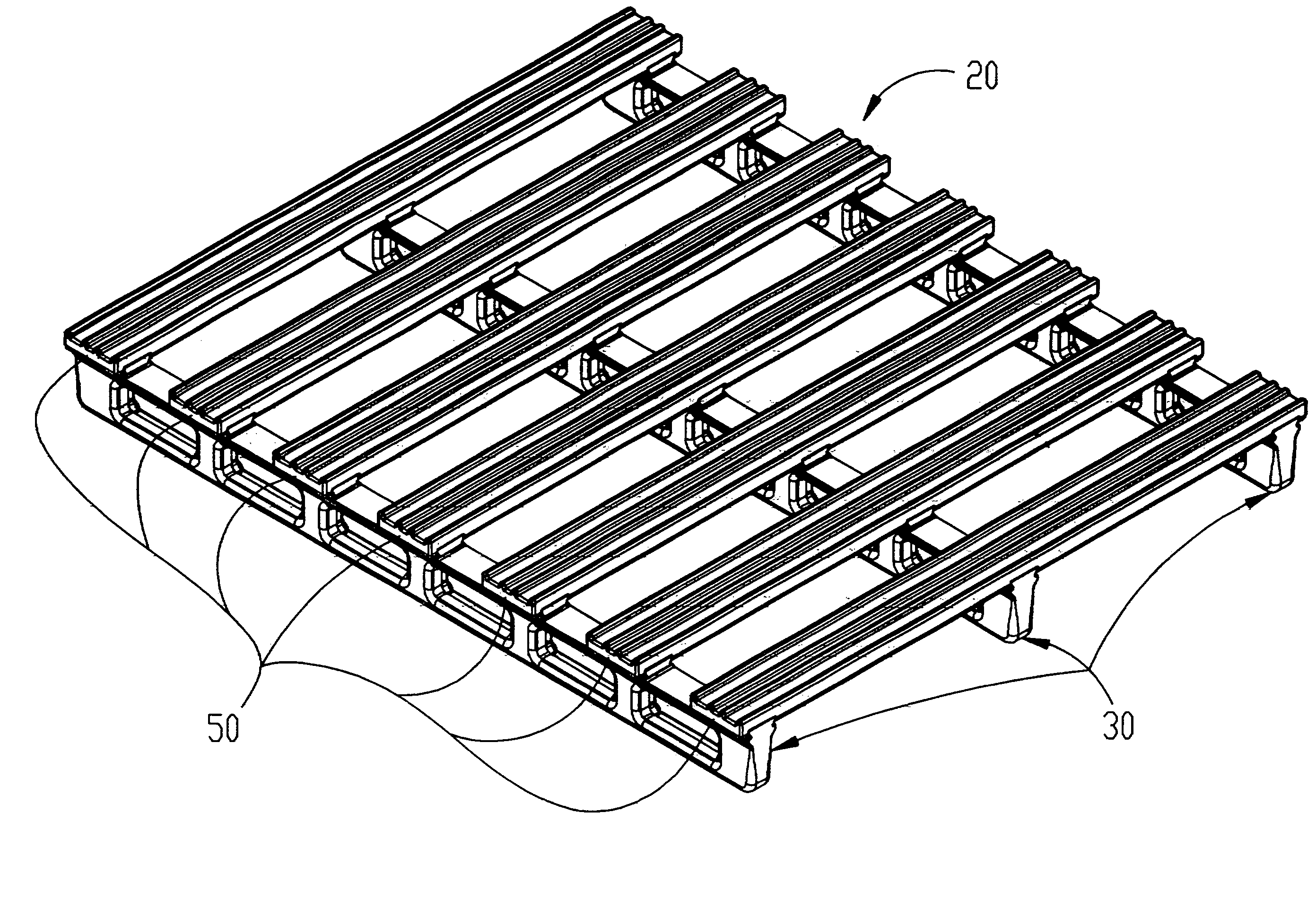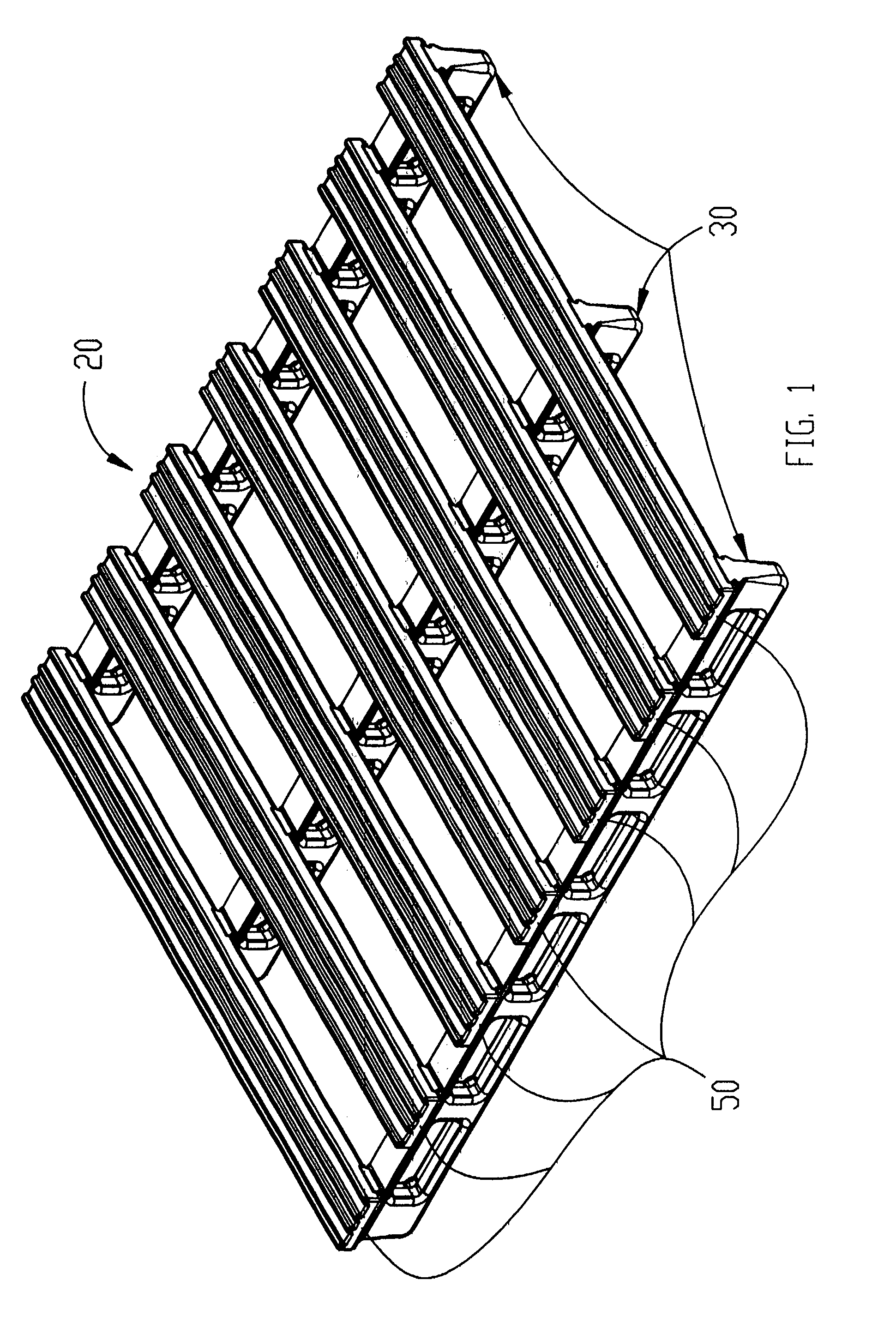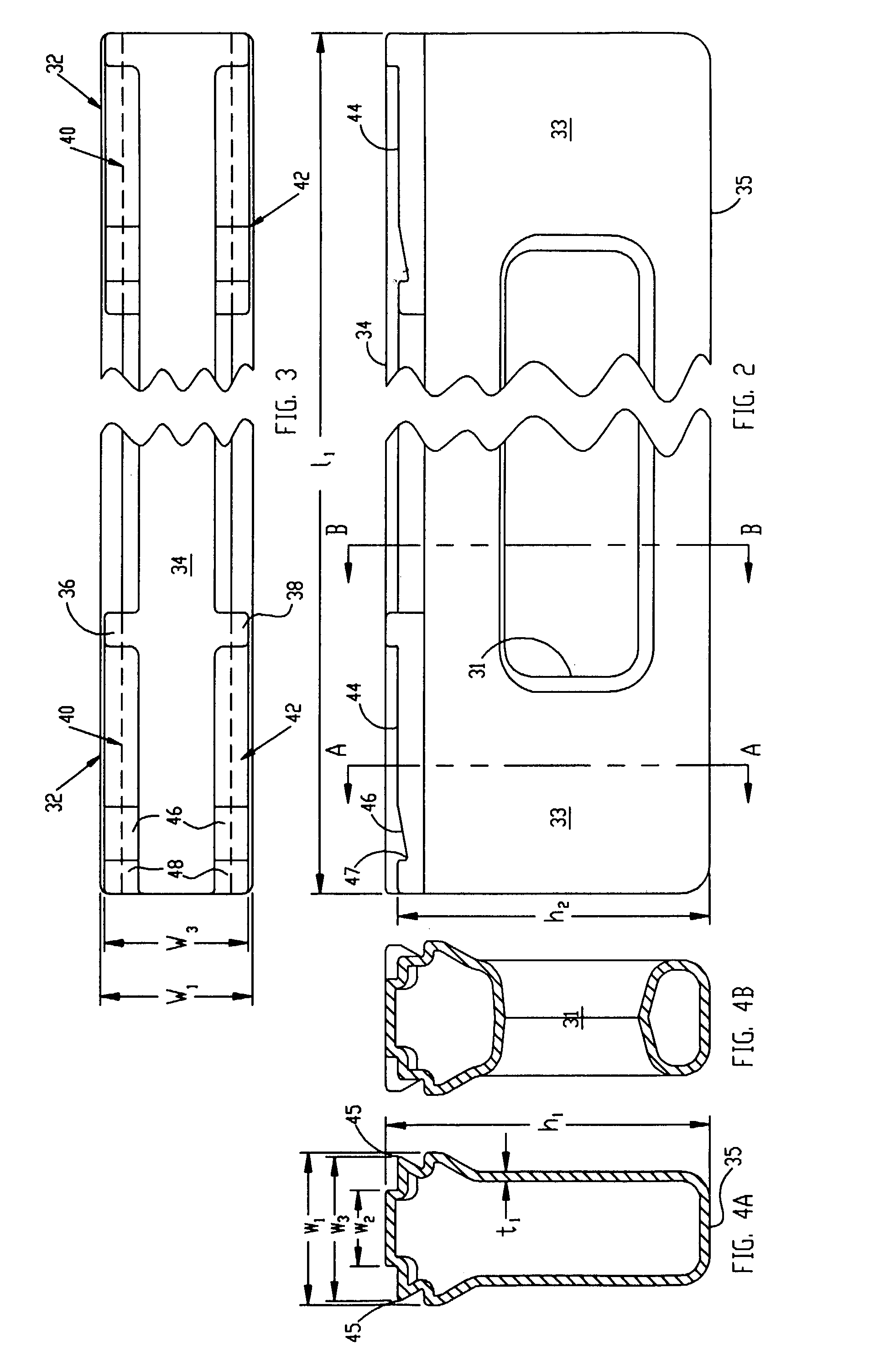Plastic pallet
a technology of plastic pallets and pallets, applied in the field of pallets, can solve the problems of splinters, limited strength of wood, and many problems for handlers, and achieve the effect of providing the necessary strength needed for pallet performance, fastening quickly and easily
- Summary
- Abstract
- Description
- Claims
- Application Information
AI Technical Summary
Benefits of technology
Problems solved by technology
Method used
Image
Examples
first embodiment
[0021]the plastic pallet of the present invention is shown in FIG. 1 generally at 20. As depicted in that view, plastic pallet 20 is comprised of a first plurality (as depicted in FIG. 1, three) stringers 30 having a first maximum height ha (see FIG. 4A), a first maximum width w1 and an overall length 11, (FIG. 2) extending generally parallel to one another. Supported by and attached to the plurality of stringers 30 at each of a second plurality of attachment regions 32 (FIG. 3) is one of a third plurality of slats 50. Stringers 30 are hollow being formed of polyethylene using a blow molded process and have a generally uniform wall thickness t1, with a plurality of apertures 31 inter-spaced with columns 33 (FIG. 2). Columns 33 provide structural support while apertures 31 reduce the amount of material needed to form the part.
[0022]As seen in more detail in FIGS. 2, 3, 4A, 4B stringer 30 has a first flat, central uppermost surface 34 which has a width w2 which is generally about ½ of...
second embodiment
[0025]plastic pallet of the present invention is shown in FIG. 9 generally at 20′. In this embodiment, the attachment regions 32′ on the top of stringer 30′ is duplicated on the bottom at 32″ (FIGS. 10, 11A, 11B). Typically a fewer number of slats 50″ will be attached to the attachment regions 32″ than slats 50′ attached to regions 32′. These slats will provide increased structural rigidity and, when the pallet 20′ is engaged from the ends (rather than through the holes 31′), these bottom slats will prevent the pallet from falling off the forklift due to tilting of the load as a result of, for example, the operator turning a sharp corner or stopping abruptly such that momentum of the load produces a torquing of the pallet stack.
PUM
 Login to View More
Login to View More Abstract
Description
Claims
Application Information
 Login to View More
Login to View More - R&D
- Intellectual Property
- Life Sciences
- Materials
- Tech Scout
- Unparalleled Data Quality
- Higher Quality Content
- 60% Fewer Hallucinations
Browse by: Latest US Patents, China's latest patents, Technical Efficacy Thesaurus, Application Domain, Technology Topic, Popular Technical Reports.
© 2025 PatSnap. All rights reserved.Legal|Privacy policy|Modern Slavery Act Transparency Statement|Sitemap|About US| Contact US: help@patsnap.com



